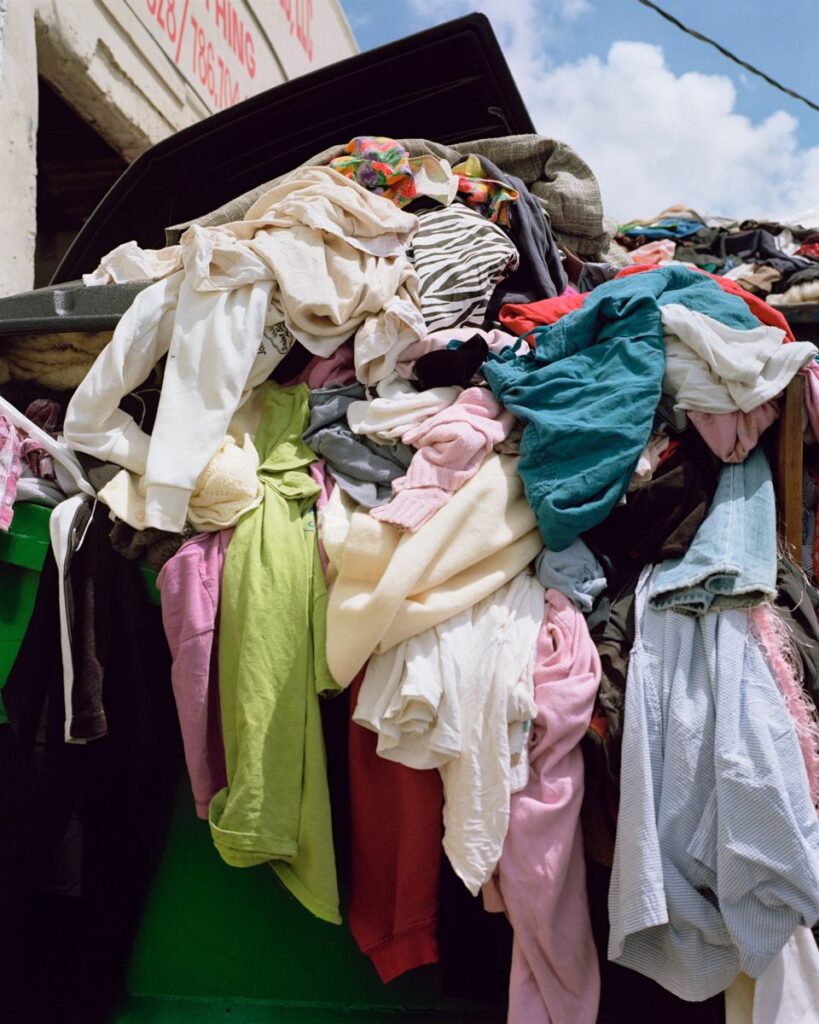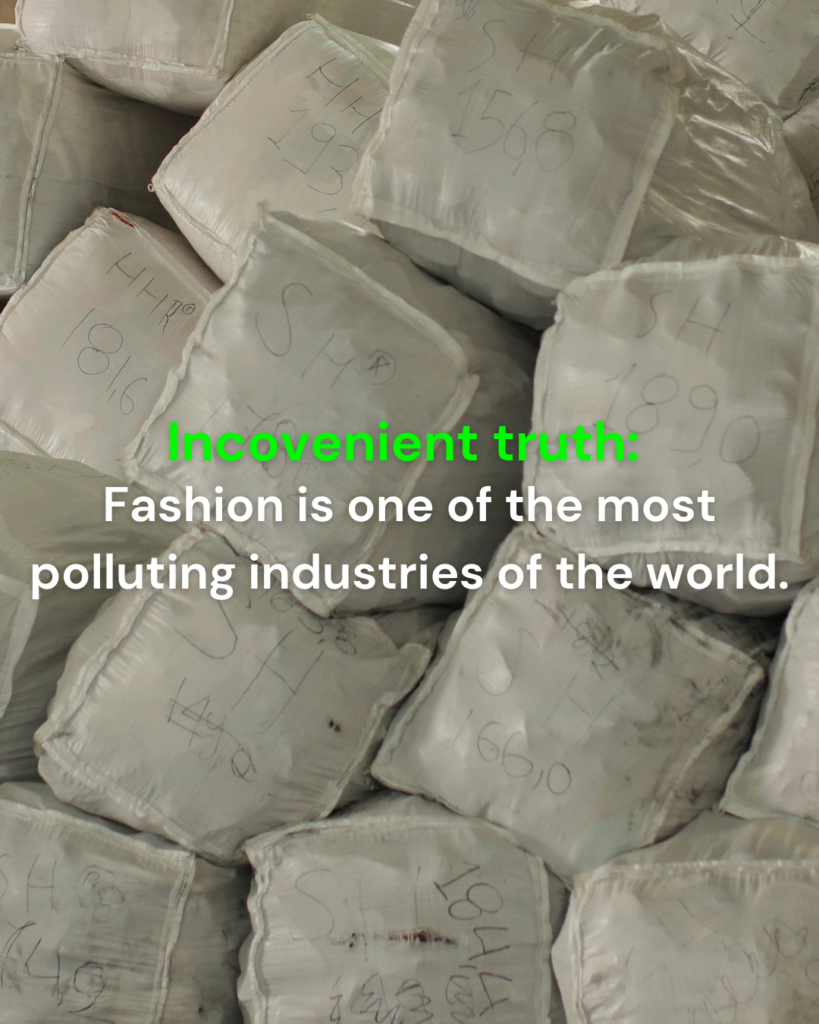
We have all put on a pair of socks only to realize that there is a big hole in the heel.
We have kept in our wardrobe our favorite pair of jeans, not because they fit us anymore but because we have a special bond with them.
We even kept a t-shirt from our favorite band’s concert when we were 16 years old.
So, our wardrobes nowadays are filled with memories and too worn-out clothes and our needs for replacing them are constant and huge.
Sure, it’s pretty easy to throw away clothing like this, but after doing so, there is only one destination: LANDFILLS.
The solution? Recycle textiles instead of tossing them away!
Alarming Statistics

While the majority of textiles are recyclable, the Council for Textile Recycling found 85% still ends up in landfills and only 15% are recycled each year. It also found that the average American throws out 70 pounds of fabric per year, and the amount of textile waste is increasing.
Clothing and textiles currently make up at least 7% of the total amount of waste in global landfill space.
The world produces 92 million tons of textile waste every year.
Between 80 and 100 billion new clothing garments are produced globally every year.
87% of the materials and fibers used to make clothing will end up in either incinerators or landfills.
Only 20% of discarded textiles are collected.
Only 1% of clothes will get recycled into new garments.
Horrifying enough?
Clothing recycling is the solution

Clothing recycling refers to the process of collecting discarded clothes and transforming them into new products or raw materials. This sustainable practice reduces waste and minimizes the negative environmental impact of the fashion industry.
The collected clothing is sorted in order to be reused and end up in second hand stores.
All the pieces of clothing that are not able to be reused are then recycled. Some companies have also started programs where customers can drop off their old clothes to be recycled.
Clothing recycling is an important step towards creating a more circular economy and reducing the fashion industry’s carbon footprint.
5 reasons why Clothing Recycling is important
Clothing recycling is essential to reduce the environmental impact of textile waste.
1. Reduction of the landfill waste
Landfill textile waste can be reduced through various methods, including recycling, repurposing, and donating clothing.
Recycling involves breaking down textiles into raw materials that can be used to create new products.
Repurposing involves using old textiles in new ways, such as turning a t-shirt into a tote bag. Donating clothing to charities or thrift stores also helps reduce textile waste by giving them a new life with someone else.
Another way to reduce textile waste is by choosing to purchase clothing made from sustainable materials and supporting companies that prioritize sustainability in their production.
2. Conservation of natural resources
Clothing recycling is a crucial step towards conserving natural resources.
Recycling extends the life of textiles, reducing the need for virgin resources such as water, energy, and raw materials.
These resources are saved in the production of new clothing, with the added benefit of reducing greenhouse gas emissions associated with manufacturing.
Recycling also diverts waste from landfills, reducing the amount of methane emissions and the risk of environmental pollution.
Clothing recycling encourages sustainable consumption, promoting awareness of responsible production and consumption practices, and supports the development of a circular economy.
3. Support of sustainable fashion and ethical clothing production
Supporting sustainable fashion and ethical clothing production can be achieved through clothing recycling.
The process of recycling clothes allows them to have a longer life, reduce waste and minimize the environmental impact of textile production.
By donating or repurposing clothes, individuals can reduce their carbon footprint and support the circular fashion industry.
Moreover, clothing recycling can support ethical practices by reducing the demand for fast fashion and encouraging the use of sustainable materials and production methods.
4. Job opportunities in textile recycling and upcycling industries
The textile recycling and upcycling industries offer various job opportunities, including sorting and processing operations for textile waste, material research and development, designs and prototypes, marketing and sales positions, and management roles.
Recycling centers hire technicians to operate machinery and perform quality control, while upcycling companies seek creative design teams to develop product concepts and marketing materials.
Job growth in these industries is expected to continue as the demand for sustainable fashion increases.
5. Promotion of the circular economy
By donating or selling used clothing, consumers can contribute to a circular economy where materials are continually reused.
Brands and retailers can also promote this circular economy by designing durable clothing and using sustainable materials.
This creates a sustainable fashion industry, helping to reduce environmental impact and contributing to a more sustainable future.

